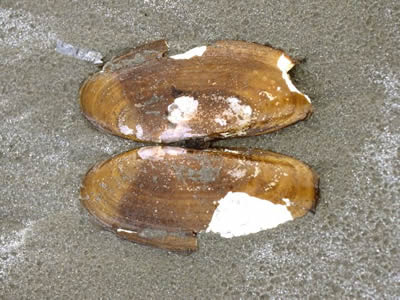| Dereila Nature Inn > Lagoon Trail > Marine Life Guides, Articles, Trivia and More! > Living Waters |
| | |
Living Waters |
| | |
| Come along and wander beside the water's edge; take a peek into the tidal pools.
Explore some of the incredible diversity of life found in and near the Living Waters. |
| | |
|
The seas and oceans of the world support an astonishing variety of life.
Many of these species remain in the water their entire life like this Orca, Orcinus orca, on the coast of British Columbia.
Sometimes known as Killer Whales, Orcas are not whales at all, but large, sociable dolphins. They live in groups called pods and feed on all sorts of marine life. |
| | |
 |
|
Others species like sea lions and seals spend a great part of their lives in water, but love to pass the day basking in the sunshine on rocks and the shore.
This California Sea Lion, Zalophus californianus, also spends much time migrating up and down the west coast of North America. |
| | |
|
The Purple Sea Urchin, Strongylocentrotus purpuratus, often finds itself exposed, and one would think that with all those spikes it would be relatively safe, feasting on algae. However, it's one of the favourite menu items of sea stars. |
| | |
 |
|
 |
Also plunked on the shores by the tides are organisms like these jellyfish. For some people, sightings on the beach may be their exposure to the diversity of species that abound in these waters. Exposed and helpless, they will wait until the next tide which will sweep them away and out in the open waters they'll swim and dance with grace. |
| | |
|
|
 |
|
|
Where tidal pools exist, a whole new world of sea life awaits to be observed. The images here are the stunning Giant Green Anemone, Anthopleura xanthogrammica, left, and Aggregating Anemones, Anthopleura elegantissima, right, which live in colonies. Anemones wait for passing prey and food which they grab with their tentacles. |
| | |
|
|
|
|
|
| |
|
|
It is not just the low tides that leave so many interesting species for us to see, many are simply washed ashore such as the Pacific Razor Clam, Siliqua patula, above left, and the Common Goose-necked Barnacle, Lepas anatifera, above right.
The Gumboot Chiton, Cryptochiton stelleri, right, is usually quite safe as it adheres itself to the rocks, but after a severe storm it may be ripped off and deposited on the beach which may be the only time it is easily observed by some people. |
|
|
| | |
|
|
|
As the fight for their own space and food continues for all the different of plants and animals, a search goes on for a safe and functional habitat.
The Sea Palm is one plant that has found its own niche and evolved to live in some of the harshest conditions.
It grows on rocks that bear the blunt of the severest storms where nothing else can survive. It is usually only visible out of water at the lowest tides of summer and colonies look like a forest of miniature palm trees.
|
| | |
|
 |
|
|
Other rock clingers include barnacles and mussels. Acorn Barnacles are common on intertidal rocks.
Some members of this group are specialized for life attached to whales and dolphins. |
|
Mussel is a loose term for this species of clams, it is applied to those clams where the shell is longer than it is wide.
This term is also used when the color is of dark blue shades or even brown. |
| | |
|
|
|
|
| | |
|
| | |
|
|
|


















